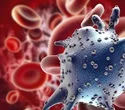Maternal antibodies may hinder malaria vaccine effectiveness in infants

Maternal antibodies passed across the placenta can interfere with the response to the malaria vaccine , which would explain its lower efficacy in infants under five months of age, according to research led by the Barcelona Institute for Global Health (ISGlobal), in collaboration with seven African centers (CISM-Mozambique, IHI-Tanzania, CRUN-Burkina Faso, KHRC-Ghana, NNIMR-Ghana, CERMEL-Gabon, KEMRI-Kenya). The findings, published in Lancet Infectious Diseases , suggest that children younger than currently recommended by the WHO may benefit from the RTS,S and R21 malaria vaccines if they live in areas with low malaria transmission, where mothers have less antibodies to the parasite. The world has reached an incredible milestone: the deployment of the first two malaria vaccines -RTS,S/AS01E and the more recent R21/Matrix-M- to protect African children against malaria caused by Plasmodium falciparum. Both vaccines target a portion of the parasite protein called circumsporozoite (...










